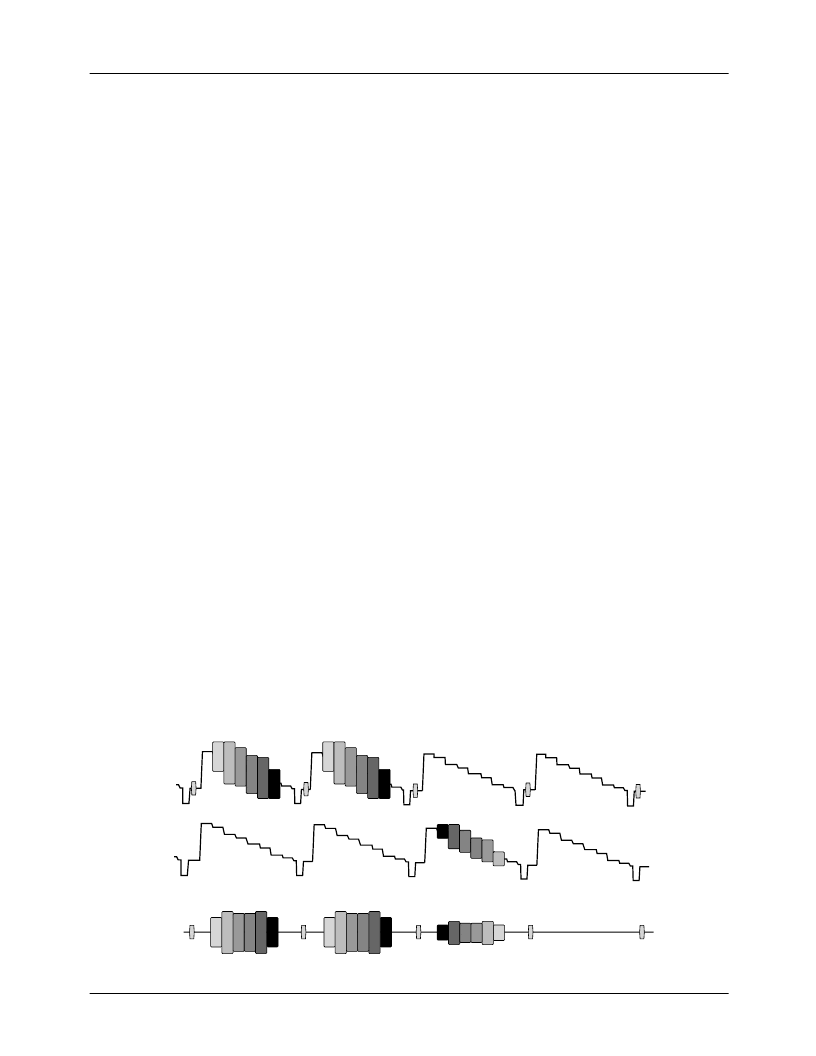- 您現(xiàn)在的位置:買(mǎi)賣(mài)IC網(wǎng) > PDF目錄383959 > TMC22152AKHC (FAIRCHILD SEMICONDUCTOR CORP) Multistandard Digital Video Decoder Three-Line Adaptive Comb Decoder Family, 8 & 10 bit PDF資料下載
參數(shù)資料
| 型號(hào): | TMC22152AKHC |
| 廠商: | FAIRCHILD SEMICONDUCTOR CORP |
| 元件分類(lèi): | 顏色信號(hào)轉(zhuǎn)換 |
| 英文描述: | Multistandard Digital Video Decoder Three-Line Adaptive Comb Decoder Family, 8 & 10 bit |
| 中文描述: | COLOR SIGNAL DECODER, PQFP100 |
| 封裝: | MQFP-100 |
| 文件頁(yè)數(shù): | 49/84頁(yè) |
| 文件大小: | 417K |
| 代理商: | TMC22152AKHC |
第1頁(yè)第2頁(yè)第3頁(yè)第4頁(yè)第5頁(yè)第6頁(yè)第7頁(yè)第8頁(yè)第9頁(yè)第10頁(yè)第11頁(yè)第12頁(yè)第13頁(yè)第14頁(yè)第15頁(yè)第16頁(yè)第17頁(yè)第18頁(yè)第19頁(yè)第20頁(yè)第21頁(yè)第22頁(yè)第23頁(yè)第24頁(yè)第25頁(yè)第26頁(yè)第27頁(yè)第28頁(yè)第29頁(yè)第30頁(yè)第31頁(yè)第32頁(yè)第33頁(yè)第34頁(yè)第35頁(yè)第36頁(yè)第37頁(yè)第38頁(yè)第39頁(yè)第40頁(yè)第41頁(yè)第42頁(yè)第43頁(yè)第44頁(yè)第45頁(yè)第46頁(yè)第47頁(yè)第48頁(yè)當(dāng)前第49頁(yè)第50頁(yè)第51頁(yè)第52頁(yè)第53頁(yè)第54頁(yè)第55頁(yè)第56頁(yè)第57頁(yè)第58頁(yè)第59頁(yè)第60頁(yè)第61頁(yè)第62頁(yè)第63頁(yè)第64頁(yè)第65頁(yè)第66頁(yè)第67頁(yè)第68頁(yè)第69頁(yè)第70頁(yè)第71頁(yè)第72頁(yè)第73頁(yè)第74頁(yè)第75頁(yè)第76頁(yè)第77頁(yè)第78頁(yè)第79頁(yè)第80頁(yè)第81頁(yè)第82頁(yè)第83頁(yè)第84頁(yè)

PRODUCT SPECIFICATION
TMC22x5yA
REV. 1.0.0 2/4/03
49
In either of these methods, the
“K”
signal can be used to cross
fade between the
YCOMB
and
the
SIMPLE
bandsplit signals.
The resulting comb filter equation can be expressed as:
Combed Luma = Simple
+
(K * Combed High
Frequency Luma)
Combed Chroma = Simple
-
(K * Combed High
Frequency Luma)
In the case of the chroma comb, the weighted combed high
frequency luma is subtracted from the
SIMPLE
high pass fil-
ter output to produce the combed chroma signal, and for
luma comb filters the weighted combed high frequency luma
is added to the
SIMPLE
low pass filter output to provide the
combed luminance signal.
Comb Fails
The inputs to the comb filter are monitored to detect discon-
tinuities that would cause the comb filter operation to fail.
Whenever a significant failure is predicted, the comb filter
architecture is modified and an error signal proportional to
the discontinuity is produced. For flat areas of color, it is a
relatively simple to produce an error signal that switches
between the outputs of the comb filter and the simple band
split filter without visibly softening the picture horizontally
or vertically. However, as horizontal frequencies increase
during vertical transitions, so the decision for switching
between the comb and simple bandsplit decoder becomes
more complex.
A line based comb filter can separate the luma and chroma
signals from line repetitive composite video signals, with no
loss of luma or chroma bandwidth. However, if there is a ver-
tical transition, i.e. a change from one scan line to the next,
as shown for a NTSC two line comb in Figure 17, a
comb
fail
occurs. The comb fail shown in Figure 17, clearly illus-
trates the resulting vertical smearing of the luma and chroma
signals.
In addition to the smearing, the resulting phase of the
chrominance signal with respect to the burst can cause hue
errors in the demodulated picture. In this example, the
chrominance signal would be demodulated with a 180
degree phase error. Unlike the “simple” decoder technique
any errors in the comb filter decoding produce components
that if re-encoded will never reproduce the original compos-
ite video waveform. It is therefore imperative that the num-
ber and magnitude of comb fails be kept to its absolute
minimum. This is not possible with non-adaptive comb filter
architectures, and all vertical and diagonal transitions in the
picture will cause irreversible picture degradation. For this
reason, all the TMC22x5yA comb filter decoders implement
an adaptive comb filter architecture.
To aid in this decision making process, comprehensive comb
fail signals are generated and fed to a user-programmable
lookup table (XLUT). The output of the lookup table pro-
vides the control for the cross fade between the comb and
simple bandsplit decoder.
Comb Fail Detection
The traditional approach of using the low frequency data to
look for vertical luma transitions, and rectifying the high
frequency data to estimate vertical transitions in the chroma
provides adequate comb fail detection. However, chroma
signals that are equal in magnitude but 180 degrees apart in
phase, which can also have a small difference in luma level,
for example green and magenta, can produce undetected
comb fails in the comb filter output.
To overcome problems with simpler comb fail measurement
techniques, the TMC22x5yA generates an array of patented
comb fail and comb filter control signals. To produce these
signals each input to the comb filter is passed through a sim-
ple bandsplit decoder. This provides a luma signal from the
low frequency portion of the comb filter input, and the hue
(phase) and saturation (magnitude) from the high frequency
portion of the comb filter input. These signals are compared
and the differences in luma, hue, and saturation are used to
determine the type of comb filter used to generate the
YCOMB
signal and to provide the cross fade control signal
“K”
. The
“K”
signal can be weighted within the XLUT
lookup table, allowing the user to tailor the comb
filter response to their system requirements.
Figure 17. Example of a Comb Fail Using a NSTC Two Line Comb Filter
65-22x5y-58
相關(guān)PDF資料 |
PDF描述 |
|---|---|
| TMC22153AKHC | JT 32C 32#20 SKT PLUG |
| TMC3003R2C80 | Triple Video D/A Converter |
| TMC3003KRC30 | Triple Video D/A Converter |
| TMC3003KRC50 | Triple Video D/A Converter |
| TMC3003KRC80 | Triple Video D/A Converter |
相關(guān)代理商/技術(shù)參數(shù) |
參數(shù)描述 |
|---|---|
| TMC22153 | 制造商:FAIRCHILD 制造商全稱(chēng):Fairchild Semiconductor 功能描述:Multistandard Digital Video Decoder Three-Line Adaptive Comb Decoder Family, 8 & 10 bit |
| TMC22153AKHC | 功能描述:視頻 IC Dig Video Decoder Multistandard RoHS:否 制造商:Fairchild Semiconductor 工作電源電壓:5 V 電源電流:80 mA 最大工作溫度:+ 85 C 封裝 / 箱體:TSSOP-28 封裝:Reel |
| TMC22191 | 制造商:CADEKA 制造商全稱(chēng):CADEKA 功能描述:Digital Video Encoders/Layering Engine |
| TMC22191KHC | 功能描述:視頻 IC D/V Encoder Layering Engine RoHS:否 制造商:Fairchild Semiconductor 工作電源電壓:5 V 電源電流:80 mA 最大工作溫度:+ 85 C 封裝 / 箱體:TSSOP-28 封裝:Reel |
| TMC22191R0C | 功能描述:視頻 IC D/V Encoder Layering Engine RoHS:否 制造商:Fairchild Semiconductor 工作電源電壓:5 V 電源電流:80 mA 最大工作溫度:+ 85 C 封裝 / 箱體:TSSOP-28 封裝:Reel |
發(fā)布緊急采購(gòu),3分鐘左右您將得到回復(fù)。